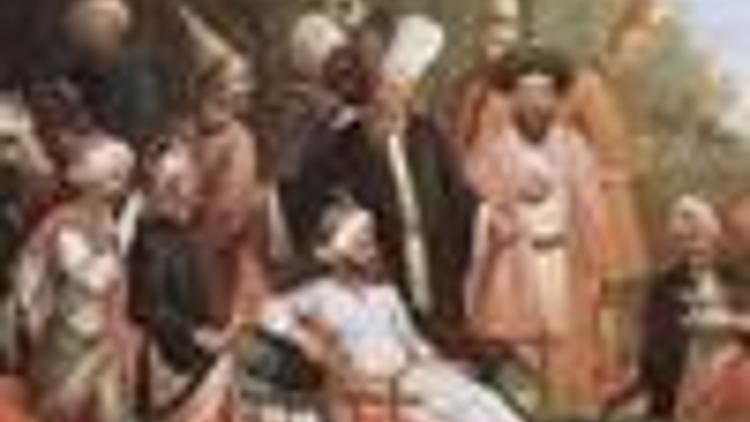Istanbul once a favorite hunting ground for nobles
Güncelleme Tarihi:

ISTANBUL – Hunting was in the blood of the Ottomans as descendents of hunter herdsmen of the Central Asian steppes. These Turks were extraordinarily adept at the use of the bow and the javelin. In fact hunting played a significant part in what constituted Turkish manhood.
Have you ever seen a wolf in Istanbul? How about a ferret in the heart of Cihangir? Or possibly a hawk hunting pigeons for lunch? Well, the wolf sounds farfetched but a friend swore up and down that he hadn’t had very much to drink when he ran across a wolf as he walked down a back street of Besiktas one night.
Still it gives you pause when you read in the papers a couple of months later that a wolf was killed in Yenikoy, a neighborhood on the European shores of the Bosphorus.
The ferret is easy. They’ve managed to survive in deserted old buildings and unused lots that still have trees and plenty of shrubs. One even used to be so comfortable with the local cats that you might see him sitting next to a cat watching a parade on the street below. As for the hawk, undoubtedly the many birdwatchers in Istanbul have seen plenty of them.
It’s much harder to realize that Istanbul was once a favorite hunting ground for Byzantine emperors and Ottoman sultans. The Bosphorus region was heavily forested although small villages were found at intervals along the shore. Only later toward the 18th century did the population of Istanbul and their need for food expand well beyond the city walls and garden farming became very big business.
The range of wildlife extended from bears to boars, deer to pheasant. Imagine the Belgrade Forest covering all the hills on both sides of the Bosphorus Strait. We’re told by early sources that the Byzantine nobles and even the emperors frequently went out hunting as a pastime. They also built themselves small hunting lodges here and there, but mostly on the European side of the strait. To go across to the Asian side would mean a boat trip and while that was possible, it was hardly convenient.
From hunting lodge to fortress
Even before the Ottomans captured Constantinople in 1453, the Turks were hunting along the Asian shore of the Bosphorus. According to one story, Fatih Sultan Mehmet asked permission from the Byzantine emperor to build a hunting lodge on the European side. The emperor granted his request but limited it to the amount of land that a cowhide could cover.
So Mehmet had the cowhide cut into ultra thin strips and used them like string to outline a much bigger space. So the “humble” hunting lodge became the fortress and the base for the conquest of the city. One has to wonder at this story because centuries earlier the same ruse was credited to Queen Dido at Carthage in the Roman author Virgil’s famous poem, The Aeneid.
Hunting was in the blood of the Ottomans as descendents of hunter herdsmen of the Central Asian steppes. These Turks were extraordinarily adept at the use of the bow and the javelin, two weapons that stood them in good stead in war and raids as well as being a means of diversifying the day’s dinner. In fact hunting played a significant part in what constituted Turkish manhood. So it is not surprising that this was a favorite pastime among the Turks over the centuries.
Today it would be hard to imagine one of the Ottoman sultans, Bayezid II (1447-1512) hunting on the hill around Galatasaray Lycee. An alternative story has that the sultan liked to walk around Istanbul in disguise. It seems the sultan became tired and thirsty and, upon spotting a garden with a wise man named Gul Baba (Father Rose) in it, he stopped his hunting to ask for a drink of water.
He was so pleased with the old man and conversing with him that he promised him a reward. The old man said that he wanted a school built on the site of his hut and the sultan obliged. So the Ottoman Imperial School was established next to the garden and was the beginning of Galatasaray Lycee and its world famous football team. As for Gul Baba, he became the headmaster of the school. The wonderful garden that had stopped the sultan contained beautiful red and yellow roses, the origin of the lycee’s colors.�
Horses of Turkish stock
The horses ridden by the Ottomans have seldom been studied although Jeremy James has been interested in the thoroughbred horses that were raised in the West from what he believes was Turkish stock.
He has found that the horses of Turkish stock were particularly large and well-muscled by measuring the dimensions of some of the armor the Turkish horses wore in Ottoman times and comparing them against that in the West. Basically the horses were bred for war and stamina. We also know that some of the sultans had their favorite mounts as well, probably raised in later years on state stud farms.

